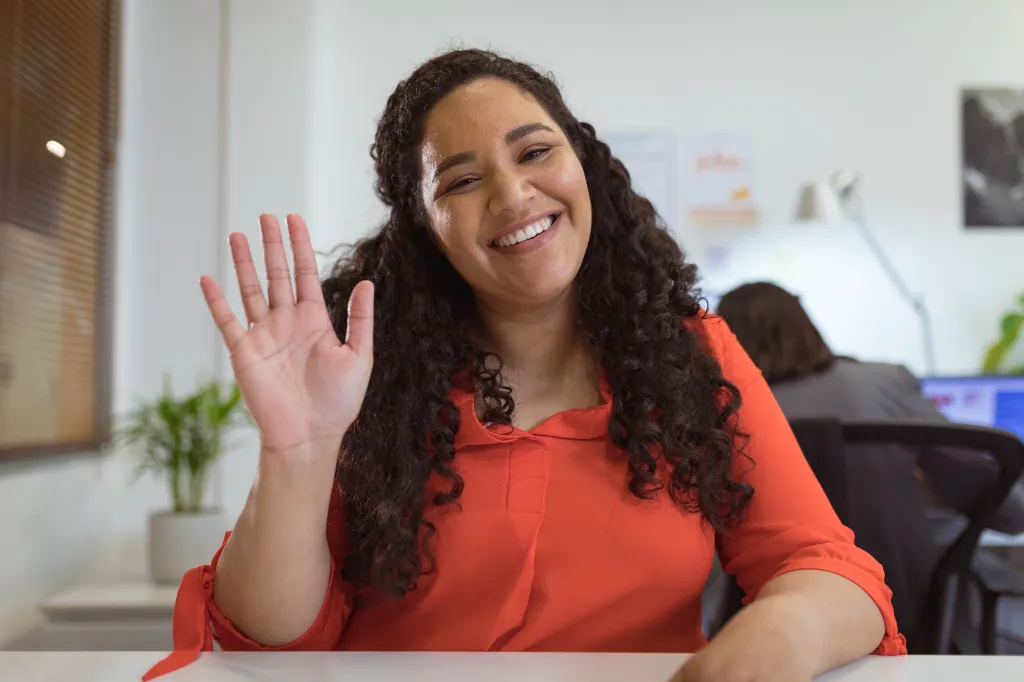What is Dyspraxia?
Dyspraxia is a neurological difference affecting fine and gross motor skills, co-ordination and planning. It is also known as developmental co-ordination disorder, which affects up to 10% of the population.
Dyspraxia affects the co-ordination of intentional movements and complex muscle activities like balance, writing, and dancing. It impacts parts of the brain that coordinate these activities and develops in childhood. As a result, motor milestones in children, like walking and crawling, tend to be delayed.
Dyspraxia in Adults
Dyspraxia is different for everyone, and there are various potential signs and symptoms that can change over time. Since it is a neurological difference, understanding developmental coordination disorder is key to finding the right therapies.
No two people will present with the same set of symptoms, but the signs of dyspraxia initially show during childhood years, but still, some adults get diagnosed later in life. Adults may also develop developmental co-ordination disorder after a stroke or a serious brain injury.
DCD affects gross and fine motor skills, and in some instances, it can affect processing speed, memory and attention. Adults with dyspraxia may also experience difficulties with organisation and memory. However, with a proper diagnosis and treatment, adults with dyspraxia can have a fulfilling social life, thriving careers and enjoy various activities. Getting support from friends and family can play a vital role in helping individuals with dyspraxia lead fulfilling lives.
Dyspraxia in Children
Dyspraxia in children affects the co-ordination of muscles and fine and gross motor skills, as well as brain activity, like speaking and performing complicated tasks. However, it is essential to know that dyspraxia doesn’t affect intelligence.

There is a wide array of abilities in any group of children, and every child develops differently. Children with dyspraxia develop their motor skills and co-ordination more slowly, and some things may be more difficult to learn, but this doesn’t mean that the skills cannot be learnt at all. With proactive support, children with dyspraxia can learn the necessary skills and gain confidence in their abilities.
Types of Dyspraxia
Healthcare professionals classify dyspraxia into various types based on how it affects an individual’s development. By classifying dyspraxia, clinicians can focus on the specific needs of each individual and develop tailored care plans.
Dyspraxia is most commonly divided into:
- Verbal dyspraxia – affects the motor neurons that control movements used when speaking
- Oral dyspraxia – affects the voluntary control of movements of the lips, jaw, tongue and soft palate
- Motor Dyspraxia – affects precise movements like dressing, riding a bike and writing
Signs and Symptoms of Dyspraxia
Every person’s experience with dyspraxia is unique and can be influenced by a variety of factors like age, support from family and friends and coping mechanisms. However, there are a few symptoms that are the most common for DCD, such as:
- Difficulty using motor skills to perform practical tasks or activities that involve physical movement
- Needing more time to perform everyday movements
- Lack of balance
- Challenges with memory
- Coordination difficulties
- Difficulty playing sports
- Low self-esteem
- Lower level of spatial awareness
Additionally, many people with DCD experience time management difficulties and challenges with speech and language development which can affect an individual’s social life and ability to communicate.
Symptoms of Dyspraxia in Adults
For adults, dyspraxia symptoms are unique for every person. However, adults with developmental co-ordination disorder may experience the following symptoms:
- Difficulty with maintaining deadlines and being punctual in the workplace
- Difficulty handling manual tools and equipment
- Requiring more time to learn a new skill or apply skills to motor tasks in a dynamic environment
- Long pauses before responding to a question
- Poor time management
- Social anxiety
Symptoms of Dyspraxia in Children
For children, the symptoms and signs of dyspraxia may present themselves differently than in adults. Developmental co-ordination disorder affects children’s performance in everyday life skills and the development of fine and gross motor skills.
Some of the most common signs of dyspraxia in children include:
- Slow movements
- Delay in early milestones like crawling, sitting and walking
- Lack of interest in games or activities
- Proneness to falling and stumbling
- Difficulties grasping pens and pencils
- Difficulty with everyday motor tasks like using utensils or getting dressed
- Difficulty staying focused
- Co-ordination difficulties

Causes of Dyspraxia
Dyspraxia may occur due to challenges in transmitting information between one’s brain and body. There’s no one particular cause for this neurological challenge. However, some of these factors may increase the possibility of developing dyspraxia include:
- Low birth weight
- Genetics
- Premature birth
Dyspraxia Assessment
There are a range of tests that detect dyspraxia. When movement difficulties are noticed in children, parents often consult a GP and provide them with details about symptoms, medical history and development. The medical professionals assess all the symptoms and risk factors and are then able to conclude a diagnosis. The same process is applied to adults, where a professional will provide multiple assessments to diagnose dyspraxia.
Developmental co-ordination disorder can be diagnosed by a paediatrician, neurologist, educational psychologist, and speech and language therapists, who can all assess co-ordination, motor skills and balance.
Treatments for Dyspraxia
Currently, there is no cure for dyspraxia. It is a difference that requires multiple therapy strategies and approaches since every individual experiences DCD uniquely. This means that a tailored care plan is essential for people to reach new milestones and develop new skills.
Perceptual Motor Training
Perceptual motor training allows children to develop their perceptual and sensory skills and connect them to their motor skills so they can perform various movements and interact with the environment confidently. Perceptual motor training helps teach children movements related to time, direction and spatial awareness. Perceptual motor training involves a series of practical tasks developed by educational psychologists to improve the child’s movements, language skills and visual and auditory skills.
Occupational Therapy
Occupational therapy is extremely beneficial as it helps people take care of themselves and provides them with the ability to complete personal tasks like dressing, bathing and going to the bathroom with as little assistance as possible. Occupational therapy focuses on self-care skills and improves people’s independence. Occupational therapy involves a broad range of tools that focus on helping people improve their motor and organisational skills. An occupational therapist will provide a wide range of exercises to help improve all skills.
Physical Therapy
Physical therapy helps to keep individuals with dyspraxia in physical shape and allows them to improve motor skills through exercise. Exercise also helps keep people fit and learn new skills essential for people with DCD. Trained professionals enhance people’s physical function and work towards optimising the recovery process and educating people on how to improve their movement patterns. Some of the other benefits include:
- Improved mobility
- Faster recovery from injury or trauma
- Fall prevention
- Improved balance
Speech and Language Therapy
Speech and language therapy involves developing learning programs that therapists create to help people with speech impediments overcome their challenges when stuttering or having difficulty producing sounds. Speech therapy has a lot of benefits for children, such as:
- Improving communication
- Allowing children to express their feelings and thoughts
- Helping children speak
- Preparing children for school
- Improving vocal quality
- Increasing self-esteem
Cognitive Behavioural Therapy
Cognitive behavioural therapy, or talk therapy, focuses on people’s thoughts and feelings that may develop due to stigma and other social barriers imposed on people with this condition. Cognitive behavioural therapy offers a lot of benefits, but the biggest advantages include helping children and adults improve their self-esteem and supporting the natural thought process.
Dyspraxia Related Conditions
In some cases, dyspraxia can even be mistaken for other conditions. However, it’s important to mention that dyspraxia can coexist with other conditions, such as:
- Attention deficit hyperactivity disorder (ADHD)
- Autism Spectrum Disorder
- Dyslexia
Dyspraxia and Dyslexia
Dyslexia and dyspraxia often co-occur. Studies from the Dyspraxia Foundation show that half of the people with dyslexia also have DCD since both challenges affect a person’s learning style and language development. Although these learning difficulties can impact learning style, children with dyslexia or dyspraxia tend to be creative thinkers and holistic problem solvers. Individual learners benefit greatly from creating their own learning strategies through multi-sensory learning that is delivered in small steps at a child’s own pace. This way, children have a lot of opportunities to repeat and get the right and positive reinforcement.
Dyspraxia and Autism
Studies show a significant overlap between some symptoms of Autism and dyspraxia, especially when noticing the first signs in children. Both challenges may cause delays in developmental milestones like crawling, walking and sitting. Autism is much more researched and familiar, sometimes leading to many children with dyspraxia getting misdiagnosed. It is essential to know that dyspraxia mainly impacts movement, while Autism primarily affects communication and social skills.
Dyspraxia and ADHD
ADHD and dyspraxia can often co-occur. Children with these challenges can sometimes face difficulties in the classroom, like experiencing challenges when writing. The difference between these two lies in the signs and symptoms. Children with ADHD often have difficulties due to hyperactivity or challenges with paying attention, while children with dyspraxia have difficulties which stem from movement and co-ordination.
Living with Dyspraxia
Growing up in an environment without an awareness of dyspraxia can be a challenging experience. Without a proper diagnosis, some individuals living with dyspraxia may interpret these difficulties and challenges in education or the workplace as a personal underachievement and may develop feelings of guilt and frustration.
However, dyspraxia doesn’t affect the intellectual ability of people, and with the right treatment approach, children and adults can thrive in every aspect of life. Through tailored care plans and person-centred care, people with dyspraxia can develop their unique skills and become creative thinkers. Having access to a support system allows people with dyspraxia to reach their full potential in both academic and work life.
How Does Unique Community Services Support Individuals with Dyspraxia?
At Unique Community Services, we provide proactive support and care for people living with dyspraxia. Our trained clinicians are guided by a person-centred framework and are committed to helping individuals with complex care needs on their journey to independence.
We develop person-centred, holistic care plans for people aged 0-65+ and provide support in the comfort of your own home. Our services are available all across the UK, but you can also find us in Manchester and Bristol.
If you are considering complex care services for a loved one or for yourself, contact us today.














